Kuala Lumpur
Kuala Lumpur is a city of delightful contrasts and one of
the most vibrant cities in Asia. Visitors will be greeted by the
stunning Petronas Twin Towers, a world-renowned icon of the country. The
numerous pre-war heritage buildings reflect Kuala Lumpur’s rich past and
stand in charming juxtaposition to the modern ambience. Lush greenery
and well-manicured parks lend a refreshing garden appeal to the city.
With its colourful potpourri of races and cultures, KL, as the city is
popularly known, is a kaleidoscope of fascinating sights and sounds.
Immerse yourself in its abundance of attractions:
|
|
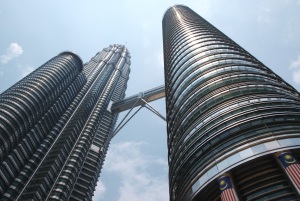 |
|
The world's tallest twin towers are not to be
missed. The 88-storey twin tower is nearly 452m tall. Designed
by Argentinian Architect Cesar Pelli, the twin towers’ floor
plan is based on an eight-sided star that echoes arabesque
patterns. Islamic influences are also evident in each tower’s
five pillars of Islam – and in the 63m masts that crown them,
calling to mind the minarets of a mosque and the Star of Islam.
The twin tower is headquarters of the national oil and gas
company Petronas.
The towers are the centrepiece of the Kuala Lumpur City
Centre (KLCC), consisting of the state-of-the-art Kuala Lumpur
Convention Centre, Suria KLCC shopping mall, a five-star hotel,
the immaculately landscaped KLCC Park as well as a mosque. |
For more information and purchase tickets visit:
http://www.petronastwintowers.com.my/ |
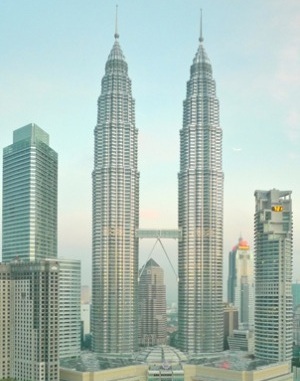 |
Suria KLCC
Situated
within the prestigious Kuala Lumpur City Centre (KLCC), this
popular mall houses six floors of retail outlets. Its impressive
tenant mix includes Isetan, Parkson Grand and Marks & Spencer.
Aseana and Pucuk Rebung are exclusive outlets offering a
remarkable range of unique ethnic-inspired items. Sample the
wide variety of cuisine at the Asian Flavours Food Court. Take a
break to enjoy the refreshing ambience of the
immaculately-landscaped KLCC Park and the spectacular musical
fountain display.
Website:
www.suriaklcc.com.my
Petrosains
Level 4,
Suria KLCC, Kuala Lumpur City Centre (KLCC) Gain an insight into
the petroleum industry in this exciting discovery centre. With
7,000 square metres of exhibit area, visitors will have an
enjoyable time with the host of interactive displays, dioramas
and activities. Travel in an oil-drop shaped vehicle, visit an
oil platform or enjoy a thrilling ride in a helicopter
simulator. A hand-held computer will help visitors to interact
with the exhibits.
Website:
www.petrosains.com.my
Petronas Art Gallery
This gallery
is designed with an emphasis on natural geometry and abstract
concepts. Its display space of 1135.92 square metres features
both traditional and modern artistic expressions. Activities
here include art demonstrations, forums and classes.
Website:
www.galeripetronas.com.my |
KLCC Park
This is a
beautifully landscaped park with approximately 1,900
indigenoustrees and palms representing 74 species as well as
soothing water features. The park beckons all in the family with
a children’s playground, a wading pool and a 1.3km rubberised
jogging track. Various murals and sculptures add to its appeal.
A delightful attraction here is the Symphony Lake, where two
fountains provide 150 colourful and dazzling animations.
|
|
MENARA KUALA LUMPUR (KL Tower)
Among Kuala Lumpur's major landmarks, the 421-meter Kuala Lumpur Tower
sits in the middle of the Bukit Nanas Forest Reserve, offering a
majestic view
of the city. Dining
at The Sri Angkasa Revolving Restaurant, and musical and traditional
dance performances can be enjoyed at the tower.
Website: www.menarakl.com.my
|
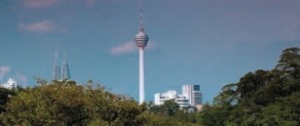 |
|
Make it a point to get to the Kuala Lumpur Railway
Station on Jalan Sultan Hishamuddin. Built in the early
1900s, this grand dame is now a station-cum-hotel. Arches,
beautiful spires and seven shapely minarets are the
highlight of this North Indian Islamic inspired building.
Head for the bridge on Jalan Kinabalu and you'll see just
why this elegant structure continues to hold its own amongst
the city’s skyscrapers.
This splendid building in the heart of the city was the
hub for the nation’s rail transportation system before the
modern KL Sentral Station was built. Its Moorish
architecture with graceful arches and minarets makes it one
of the city’s most photographed landmarks. Equally
impressive is the Malayan Railway (KTM) Headquarters
overlooking the railway station. |
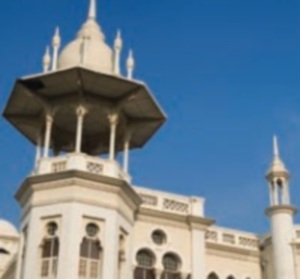 |
PETALING STREET (also
known as Chinatown)
Bargains galore! Shopping at Petaling Street is fun as
haggling is the main order of business. There’s always a
good bargain to be had here.
KL’s Chinatown is a bustling and colourful street of
shops, restaurants and hawker stalls. Its popular night
market is a daily feature. This is a good place to purchase
Chinese artefacts and bric-a-brac. Other interesting items
include herbs for traditional remedies and fresh flowers.
Shops here stock a variety of textiles, clothes, watches,
shoes and handbags. Petaling Street is also known for its
jewellery shops with their fascinating variety of
beautifully crafted gold items set with priceless gemstones. Aside from the popular shopping
district of Petaling Street, the nearby buildings, clan
houses and temples contain evidences of the city’s built
heritage. Among them are the Lee Rubber Building, Kwong Siew
Association, Old High Street Police Station, Police Sikh
Temple, Old China Café, Old Victoria Institution and Sri
Maha Mariamman Temple. |
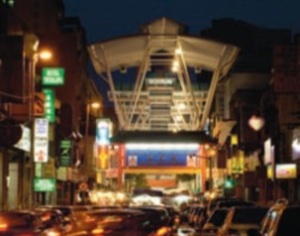 |
PASAR SENI (Central Market)
This building, designed by architect and engineer TY Lee, is
a fine example of Art Deco styles of the 1930s. Central Market
used to be the town’s wholesale and retail wet market for fresh
produce. It was renovated and reopened in 1986, and it was the
first example of a heritage building being adapted for a
different use. It is now a leading crafts centre in the city. |
|
|
This remarkable edifice, built in
1897, was named after the State Ruler and served as the
government administration building during the British
era. Boasting a Mahometan or Neo-Saracenic style, the
building is constructed entirely of brick. It was the
largest building of its day and was said to be the
finest in the Malay states. The stately structure
consists of an imposing porch, graceful horseshoe-shaped
arches, shiny copper domes and a 41.2-metre-high clock
tower. It now houses the Malaysian Supreme and High
Courts as well as a handicraft centre. The building
makes an impressive landmark when illuminated at night.
Among other heritage sites in this zone are the Jamek
Mosque and Cathedral of Saint Mary the Virgin, as well
as the National History Museum. |
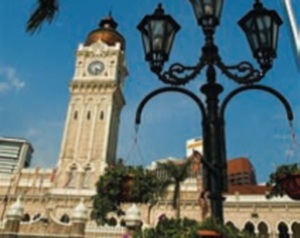 |
|
This historic site saw the birth of
Malaysia on 31 August 1957. It was at this square that
the Union Jack was lowered and the Malayan flag hoisted,
signaling Malaysia's independence as a nation. Hence the
name Merdeka, which means “Independence” in Malay. A
100-metre-high flagpole, reputedly the tallest in the
world, proudly flies the Malaysian flag. The Square used
to be the focal point of Kuala Lumpur and the field here
was the venue for police parades and cricket matches.
Today, it is a beautifully landscaped area with gardens,
terraces and fountains and a popular spot for
photography. Merdeka Square is still an important venue
for national events such as National Day celebrations
and street parades.Surrounding the Square are many
buildings of historical interest such as the Sultan
Abdul Samad Building, the Tudor-style Royal Selangor
Club, National History Museum, Memorial Library and St
Mary's Cathedral, a gothic-style church. |
 |
MASJID INDIA (also known as
Little India)
Little India or Masjid India is simply splendid!
Chaos reigns with motorbikes tooting, people jostling,
peddlers shouting and hailers blaring Hindi music amidst
colourful displays of Indian fabrics, home wares and the
most current movies. Awaken the senses to the smell of
incense, spices and curries wafting from every corner. A
delightful experience not to be missed!
KL’s ‘Little India’, teems with a colourful
hotch-potch of people and products. The pre-war
shophouses sell a profusion of authentic Indian items
such as traditional costumes in vibrant hues, Indian
delicacies as well as beautifully crafted ornaments and
accessories. Nearby, street vendors sell therapeutic
massage oils, herbs and roots. Locals flock here for
Malay traditional attires and headgear. |
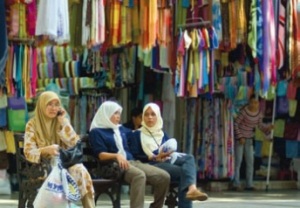 |
|
Lebuh Ampang, situated in the
vicinity, is a bustling street with peddlers offering
jasmine garlands, aromatic incenses, spices and exotic
fragrances.
Just minutes away from Masjid India
is Masjid Jamek. |
|
Masjid Jamek
This mosque occupies
a historic location at the confluence of the Klang
and Gombak rivers, the birthplace of Kuala Lumpur.
Built in 1909, this is the city’s oldest surviving
mosque and was officially opened by the then Sultan
of Selangor. Its designwas inspired byMogul
architecture in northen India. Cupolas and minarets
top the brick walls and arched colonnades
while a 70-feet dome surmounts the prayer hall.
Masjid Jamek was thecity’s principal mosque until
the opening of the National Mosque in 1965.
|
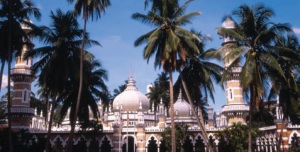 |
|
Masjid Negara or the National Mosque
is the most distinguished mosque in Kuala Lumpur. It
has a unique stylised, star-shaped dome representing
the 13 states of Malaysia and the five pillars of
Islam. Its 73-metre-high minaret stands impressively
against the skyline. A praying area of 1,432 sq
metres can accommodate up to 8,000 people. Within
its beautifully landscaped grounds are pools and
fountains. Visitors are required to be appropriately
dressed while visiting the mosque. Robes and
headscarves will be provided for ladies. |
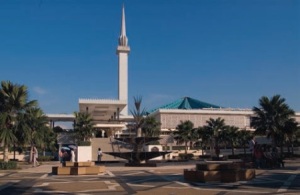 |
|
Enjoy verdant greenery in this refreshing enclave
in the middle of a bustling city. KL Lake Gardens is
the city’s premier park, sprawling over 200 acres.
Built around two lakes, this tropical garden has
vistas of exotic blooms, luxuriant foliage, imposing
sculptures, majestic raintrees and creative theme
parks. Its jogging and walking trails provide
refreshing recreation amidst pleasant surroundings.
KL Lake Gardens and its environs is home to the
Orchid & Hibiscus Garden, Deer Park, KL Butterfly
Park and KL Bird Park. |
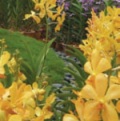 |
Orchid & Hibiscus Gardens
Admire 800 varieties of rare and exotic orchids
here. Visitors can buy their favourite varieties at
the Orchid Bazaar held weekly on Sundays. The
adjacent Hibiscus Garden showcases an assortment of
the colourful blooms, known locally as the Bunga
Raya, Malaysia’s national flower.
|
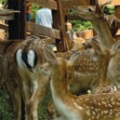 |
Deer Park
Sprawled over two hectares of undulating terrain,
this area with shady trees, trickling streams and
ponds is home to spotted deer from Holland. Enjoy
feeding these gentle creatures and keep a look out
for the endearing Sang Kancil, the wily mouse deer
of ancient folklore.
|
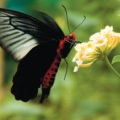 |
KL Butterfly Park
Marvel at more than 6,000 butterflies consisting of
over 120 species. The park recreates the natural
habitat of the butterfly, with a vast variety of
exotic plants and multi-hued blooms. Stroll along to
take a closer look at the various colours and sizes
of these delicate creatures. Special attractions
include the huge Raja Brooke, Iswara, Malay
Lacewing, Five Bar Swordtail, Yellow Tip, Indian
Leaf and Lime Butterfly species. Housed within the
park are a butterfly nursery and breeding area,
insect museum and souvenir shop.
|
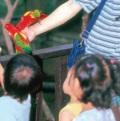 |
KL Bird Park
Reputed to have the largest free-flight walk-in
aviary in the world, this park is home to 3000 or
more splendidly colored birds of 200 local and
foreign species. Located within the Lake Gardens;
this brilliantly landscaped, semi-natural 21-acre
park houses exotic and amazing birds such as the
Bird of Paradise, Changeable Hawk Eagle, Rhinoceros
Hornbill and more. After your visit, enjoy a
delicious meal at the Hornbill Restaurant, built in
the style of a traditional Malay house.
|
|
|
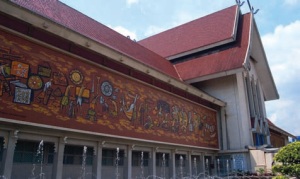 |
|
Malaysia’s premier museum located on the fringe
of the KL Lake Gardens serves as a repository for
the nation’s rich history and heritage. Built in
1963, its façade features a Minangkabaustyled roof
and two impressive front murals. Trace the nation’s
development over the decades in its four main
galleries: Culture, Faces of Malaysia, Natural
History and Weaponry, Traditional Musical
Instruments & Ceramics. Among the highlights here
are the collection of keris or the Malay dagger,
ceramics from the Ming Dynasty and traditional
musical instruments from various parts of Asia.
Outdoor displays include vintage cars, an old steam
locomotive and a replica of an old Malay palace.
Thematic exhibitions are held from time to time.
Website:
www.museum.gov.my |
|